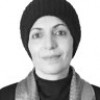Hiroshima Of Tartus: How Israel And Tahrir Al-Sham Are Undermining Syria’s Hope For Peace – OpEd
The fall of Bashar al-Assad in December 2024 placed Syria on the brink of historic transformation. With the collapse of previous military and political structures, opposition groups — especially Hay’at Tahrir al-Sham (HTS) — have attempted to fill the power vacuum and form an inclusive government.
However, this fragile process faces two major threats: relentless Israeli attacks on Syrian infrastructure and HTS’s inability to provide security and political governance. Israel, having carried out over 500 airstrikes since the fall of Damascus, has effectively dismantled Syria’s defensive capacity, with what some now call the “Hiroshima of Tartus” leaving vast destruction along the coastal areas.
At the same time, HTS, burdened by an extremist past and lacking experience in governance, has failed to earn public trust or ensure the stability required for a political transition. Israel’s repeated strikes, combined with HTS’s failure in governance and security, have placed Syria’s transition in jeopardy and thrown serious obstacles in the path of forming a stable and inclusive state.
Israel’s large-scale strikes on Syria following the fall of Assad’s regime have been unprecedented in intensity, reducing both military and civilian infrastructure to ruins. According to the Syrian Observatory for Human Rights, Israel has launched more than 500 airstrikes since December 2024, targeting missile bases, weapons depots, naval facilities, and even civilian infrastructure such as the ports of Tartus and Latakia.
These attacks, which Israel claims are intended to prevent armed groups from acquiring advanced weaponry, have in effect brought Syria’s defensive capabilities to zero. Rami Abdulrahman, head of the Observatory, described these strikes as “the most intense since the civil war began in 2011,”........






















 Toi Staff
Toi Staff Gideon Levy
Gideon Levy Somdeep Sen
Somdeep Sen Belen Fernandez
Belen Fernandez Tafi Mhaka
Tafi Mhaka Tarik Cyril Amar
Tarik Cyril Amar Dr Ramzy Baroud
Dr Ramzy Baroud Sabine Sterk
Sabine Sterk Moncef Khane
Moncef Khane Ghada Ageel
Ghada Ageel Stephanie A. Sarkis Ph.d
Stephanie A. Sarkis Ph.d Muhannad Ayyash
Muhannad Ayyash John Nosta
John Nosta Rachel Marsden
Rachel Marsden
